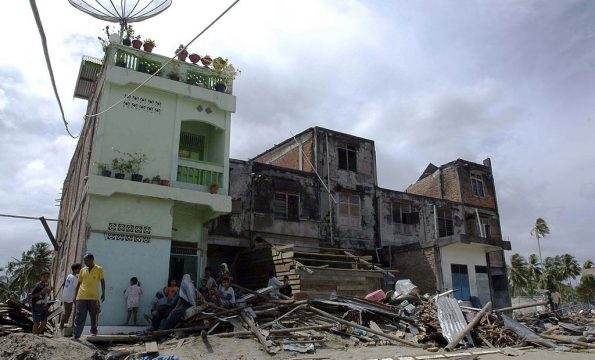Time: Indonesia is facing a long and painful recovery from the devastating earthquake and tidal wave of two weeks ago, but scientists say that this latest calamity could simply be a warning of more deadly and destructive disasters ahead.
Palu, in Indonesia’s Central Sulawesi province, was ravaged on Sept. 28 by a 7.5-magnitude earthquake and tsunami that lashed the coastal city with waves up to 20 ft. tall. The twin disasters claimed nearly 2,000 lives… some 74,000 people lost their homes, and will live in refugee camp-like settlements for the foreseeable future.
It’s been a year of natural disasters. Hurricane Florence dumped record rainfall on the Carolinas, Typhoon Mangkhut triggered landslides and killed dozens in the Philippines and turbulent wildfires tore across California. Another earthquake on Indonesia’s Lombok Island in July killed over 500 people…
But the damage those quakes cause, and the threat they pose to human life, is increasing. A report last year from the Belgium-based Centre for Research on the Epidemiology of Disasters (CRED) documented slightly fewer natural disasters in 2017 than the previous decade, but a 49% increase in the economic losses those events inflicted.
The reasons are clear: more humans are moving into more densely populated cities, and surrounding themselves with infrastructure — roads, bridges, and buildings — that become deadly hazards during a disaster, and expensive to repair when it subsides.
People, infrastructure, and wealth are being “concentrated into increasingly exposed urban centers in the most hazardous parts of the planet,” says Bill McGuire, Emeritus Professor of Earth Sciences at University College London. “Disaster preparedness is not keeping up.”
Earthquakes and tsunamis have proven particularly deadly, claiming nearly 750,000 lives over the past 20 years, more than other extreme weather events, according to a forthcoming report from the U.N. Office for Disaster Risk Reduction.
Much of that mortality came in 2004 after a 9.1-magnitude earthquake in the southern Indian Ocean generated a devastating tsunami that killed an estimated 230,000 people in 12 countries, the majority in Indonesia.
In some cases, the very factors that make coastal cities appealing also amplify their danger. Many are built in the path of tropical storms or alongside tectonic faults that mirror coastlines. Palu is no different: it sits at the end of a long bay, which protects its residents from sea storms, McGuire notes. But that bay also helped concentrate the tsunami’s destruction, raising water levels and guiding it directly towards Palu’s inhabitants…
“There is no simple answer to this problem,” McGuire wrote to TIME in an email. “Cities are simply located in the wrong place…”
Our Comment:
This is not a good time to move to a city! Too often they are vulnerable to massive natural disasters.
Prophetic Link
“The restraining Spirit of God is even now being withdrawn from the world. Hurricanes, storms, tempests, fire and flood, disasters by sea and land, follow each other in quick succession. Science seeks to explain all these. The signs thickening around us, telling of the near approach of the Son of God, are attributed to any other than the true cause. Men cannot discern the sentinel angels restraining the four winds that they shall not blow until the servants of God are sealed; but when God shall bid His angels loose the winds, there will be such a scene of strife as no pen can picture.” Testimonies for the Church, Vol. 6, page 408.






Comments